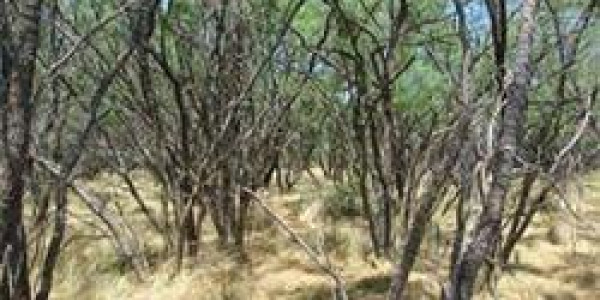Taylor Scott International News
A team of engineers and ecologists in the USA are looking into the viability of converting woody plants on uncultivated land into a useable biofuel. Like many grasslands and rangelands around the world, the Southern Great Plains region in Texas is suffering from encroachment of woody or brush plants, in this case honey mesquite ( Prosopis glandulosa ) and red berry juniper wood ( Juniperus pinchotii ). These plants are regarded as noxious plants whose proliferation can ruin grass forage production for livestock, increase the potential for erosion by reducing grass cover and deplete soil moisture. Trying to remove them has proved costly, and such efforts have met with only marginal success. Yet if kept in check, they can benefit wildlife species, provide soil nutrients and increase grass species diversity. Now, researchers at Texas AgriLife Research and Texas A&M University are looking at converting these species into biogas while managing the ecology sustainably. Both species grow across 20 million hectares in Texas alone, and can achieve a biomass density of up to 50 dry tonnes per hectare. Mesquite thicket: Redberry juniper tree Previously, there has been no data on the gasification of mesquite and juniper wood, so the team set out to determine factors such as their gas compositions, heating values and yields. Samples were harvested, chipped and sieved, then put through a small-scale batch-type updraft fixed-bed gasifier, using air as the gasification medium. The team found that the gases consisted of nitrogen, carbon monoxide, CO 2 , hydrogen, oxygen, methane and ethane. Juniper’s contained slightly more carbon monoxide and methane, while mesquite’s had more nitrogen, CO 2 and ethane. Both had low levels of nitrogen though, about one-third to one-half that of coal. The heating values of mesquite and juniper were 20,128kJ/kg and 20,584kJ/kg respectively, equivalent to medium grade sub-bituminous coal and better than cattle manure biomass, for example, which has an ash content of 14–45%. However, the ash content of mesquite and juniper is less than 2%. What this means is that for every 100g of unburnt material you are left with 14.5-45g of ash with the biomass but only 2g of ash with the juniper and mesquite. For the end-product gases, the heating value was higher in the juniper than the mesquite, at about 3,447kJ/kg and 2,966kJ/kg respectively, while filtering out the nitrogen from them more than doubled these to about 8,316kJ/kg and 7,585kJ/kg. These figures are about 10–15% of the value of pure methane and, without the nitrogen, 27% and nearly 25%. Gas yields reached about 2.4 and 2.2m3/kg for the juniper and mesquite respectively, but Dr Jim Ansley of AgriLife Research warns against extrapolating these figures to arrive at a total resource figure. As he explains, ‘These are naturally growing, uncultivated plants, so biomass densities will be variable. We don’t know how much of the 20 million hectares is at 50 tonnes per hectare, it may only be 5–10%. Plus, there would be almost no chance that all 20 million hectares would be harvested.’ Any patches or clusters of sufficient density will therefore be scattered around, he says, so one option could be to develop small, local gasification facilities to avoid the high costs of transporting the woods to a main processing facility. Before then, he wants to develop a portable gasifier and move the technology from the lab to the field. ‘We also need to explore more ways of increasing gas yields’. Author : Guy Richards Materials World Magazine, 24 Jul 2012 – See more at: http://www.iom3.org/…h.w2oJoHFY.dpuf Taylor Scott International
Taylor Scott International, Taylor Scott








